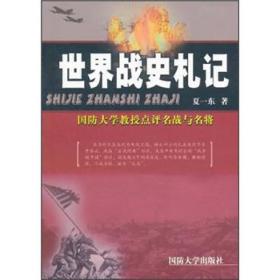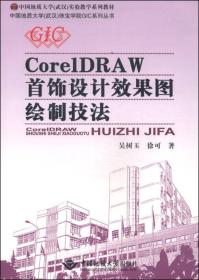
繁荣的轮回 人口变动与经济增长的一个逻辑解释
¥ 16.5 2.8折 ¥ 58 九品
仅1件
北京海淀
认证卖家担保交易快速发货售后保障
作者周天勇、王元地 著
出版社中国财富出版社
出版时间2017-03
版次1
装帧平装
货号A6
上书时间2024-12-21
- 在售商品 暂无
- 平均发货时间 13小时
- 好评率 暂无
- 最新上架
商品详情
- 品相描述:九品
图书标准信息
- 作者 周天勇、王元地 著
- 出版社 中国财富出版社
- 出版时间 2017-03
- 版次 1
- ISBN 9787504764355
- 定价 58.00元
- 装帧 平装
- 开本 16开
- 纸张 轻型纸
- 页数 304页
- 字数 256千字
- 正文语种 简体中文
- 【内容简介】
-
自2008年以来,中国经济中的“人口红利”消耗殆尽,每年8%以上增速的“中国奇迹”风光不再。未来15-20年,中国经济能否保持中高速增长?通过调整人口政策,能给经济增长带来哪些新动力?本书以独特的视角,从研究中国经济发展的“人口因素”入手,借鉴世界各国经验教训,揭示了中国经济下行的深层次原因,提出了中国人口政策方面的“生育管制”和“流动管制”带来的各种不利经济增长的后果,为各级政府制定促进经济增长的经济政策与改革方案,提供了一条崭新的思路。
- 【作者简介】
-
周天勇,经济学博士,教授,中共中央党校国际战略研究所副所长,中共中央党校校委研究室副主任,北京科技大学博士生导师。社会兼职有:中国城市发展研究会副理事长兼城市研究所所长,国家行政学院、北京科技大学、东北财政大学、中国社会科学院研究生院等教授,国家发改委价格咨询专家。
研究领域为社会主义经济理论、宏观经济、经济发展和增长、劳动经济、中小企业、金融风险、城市化、国企改革、农业经济等。在上海三联出版社、经济科学出版社和中共中央党校出版社出版有《劳动与经济增长》、《效率与供给经济学》、《金融风险与资本社会化》、《中国经济命运与前景的深层次思考》、《新发展经济学》、《中国政治体制改革》、《国有企业改革攻坚》、《现代国有资产管理体系模式》、《走出决策的经济误区》、《走出发展的体制障碍》、《中国:经济运行与结构转换》和研究生用《高级发展经济学》等专著和教材。
近年来就国家整体负债、公平与效率、政府各部门收费、财政体制、官民供养比、水电开发、中国增长的危机等方面发表的文章,引起了各方面的高度关注。
王元地,男,四川大学教授,中共党员。2012年以“人文社科青年百人计划”引进人才进入四川大学工作,聘为副研究员,2014年破格聘为博士生指导教师,并担任四川大学创新与创业管理研究所常务副所长,入选四川省学术和技术带头人后备人选,2015年破格晋升教授。研究方向为:技术许可和交易、知识产权保护、企业创新国际化和后发国家技术追赶。作品有:《中国自主创新政策评价研究》(独著)、《中国区域创新体系发展的理论与实践》(合著)、《现代企业理论》(联合主编)、《战略管理理论与实践》(主编)等。
- 【目录】
-
第1部分中国经济学界的未解之谜
1问题的起因/00
1.1中国奇迹:经济高速增长30年/00
1.1.1经济实力快速增长/00
1.1.2从农业经济社会向现代工业社会的转型/00
1.1.3对外贸易的“引进来”和“走出去”/00
1.1.4人民生活从温饱到小康/0
1.2中国经济高速增长的成因/0
1.2.1高生育率积蓄了大规模的剩余劳动力/0
1.2.2剩余劳动力优势成功嵌入全球产业链/0
1.2.3经济主力人口的创业创新动力/0
1.32008年经济增速开始下行/0
1.3.1工业生产转入了全面过剩/0
1.3.2消费、投资增速下行和突然放缓/0
1.3.3传统的出口优势逐步趋弱并已消失殆尽/0
2经济下行的“两家争鸣”与质疑/0
2.1经济本不应进入中速增长阶段/0
2.1.1“中速增长常态论”的逻辑推理和政策主张/0
2.1.2对“中速增长常态论”的商榷/0
2.2经济下行不是外因所致/0
2.2.1“增速下行外因论”的逻辑推理和政策主张/0
2.2.2对“增速下行外因论”的商榷/0
第2部分学术争论与历史演变
3人口与发展:理论述评与事实/0
3.1人口与经济关系理论的回顾与评述/0
3.1.1适度人口论与人口控制主张/0
3.1.2《增长的极限》与人口资源悲观论/0
3.1.3市场机制调控家庭生育决策的基本过程/0
3.1.4人口流动与经济增长关系的研究述评/0
3.2人口增长与工业化发展/0
3.2.1人口增长是工业化的必要条件/0
3.2.2人口增长方式转型也是工业化的产物/0
3.3人口流动、城市化及工业化发展/0
3.3.1人口流动加速城市化的进程/0
3.3.2城市化与工业化发展的互动/0
3.4人口、工业化与生态环境的动态协调发展/0
3.4.1人口增长与资源的协调发展/0
3.4.2人口、工业化与环境的协调发展/0
3.4.3人口、工业化与生态环境的动态发展/0
4生育权与迁移权/0
4.1生育权与迁移权的界定/0
4.1.1生育权在个人和国家间的归属之争/0
4.1.2迁移权在个人与国家间不同的安排/0
4.2 生育权的经济学分析/
4.2.1生育权的经济学解释/
4.2.2生育权行使的经济学探讨/
4.3 迁移权的经济学分析/
4.3.1迁移权的经济学解释/
4.3.2迁移权行使的经济学探讨/
5 世界经验:基于不同生育权和迁移权的配置/
5.1 基于不同生育权配置的国际经验/
5.1.1美国不干预的生育及经济发展/
5.1.2日本指导性计划生育与经济的先富后低/
5.1.3韩国指导性计划生育历程/
5.1.4中国台湾地区的指导性计划生育/
5.1.5计划生育政策在印度的流产 /
5.1.6不同生育权配置的国际经验总结/
5.2 基于不同迁移权配置的国际经验/
5.2.1美国的人口迁移自由/
5.2.2日本的人口迁移和住民登记/
5.2.3法国的迁移自由和流动人口管理/
5.2.4俄罗斯人口迁移及其低流动性/
5.2.5印度的人口迁移与贫民窟的形成/
5.2.6不同迁移权配置的国际经验总结/
第3部分中国人口生育管制的经济后果
6 “人口坑”与经济增长的陷阱/
6.1 “人口坑”深浅与经济高增长时间的长短/
6.1.1工业化阶段的“人口坑”与经济增长速度/
6.1.2中国“人口坑”与经济增长速度放慢/
6.2 人口增长变动对经济增长速度的影响/
6.2.1即期影响:人口增长对经济增长的影响/
6.2.2长期影响:人口变动的20年延期影响定理/
7 人口结构失衡和老龄化的经济后果/
7.1 人口结构与经济排浪式变动及增长波动/
7.1.1人口变动与消费、投资和出口变动的数理关系/
7.1.2人口变动引致国民经济排浪式衰退/
7.2 未来经济长期承受的下行和老龄化压力/
7.2.1国民经济未来长期面临的下行压力/
7.2.2未来老龄化加剧的诸多难题/
第4部分中国人口流动管制的经济后果
8 人口进入城市和退出农村的障碍和问题/
8.1 流动人口市民化的进入障碍/
8.1.1中国户籍管理制度变迁与人口流动/
8.1.2社会保障与公共服务的不公平/
8.2进城农民工人口的农村财产退出障碍/
8.2.1农民理性经济人与退出资产障碍和机会成本/
8.2.2出租退出困境与其他退出方式比较/
8.2.3农地制度复杂性与建设征用为国有之弊/
9 城市化流程的扭曲和消费塌陷/
9.1 “青出老回”与漂泊于城市/
9.1.1人口城乡钟摆式和不同地频繁流动/
9.1.2人口从农村到城市的“青出老回”/
9.1.3不返乡的农民工人口在城市中漂泊/
9.1.4大多数国家能够市民化的城市化/
9.2城市消费抑制和农村消费塌陷/
9.2.1流动人口干预制度下的城市消费抑制/
9.2.2“青出老回”流程与农村消费塌陷/
结束语/
参考文献/
PART ONEThe Unsolved Mystery in China’s Economic Community
1Origin of the Problem/ 00
1.1Chinese Miracle: The 30 Years of High Economic Growth Rate/ 00
1.1.1Rapid Growth of Economic Strength/ 00
1.1.2Transition from Agricultural Economy to Modern
Industrial Economy/ 00
1.1.3“Bringing In” and “Going Out” of International Trade/ 00
1.1.4From Subsistence to Moderate Prosperity/ 0
1.2The Reasons of China’s High Economic Growth/ 0
1.2.1High Fertility Rate Saving Huge Surplus Labor/ 0
1.2.2Successfully Integrating Surplus Labor Advantage into
Global Industrial Chain/ 0
1.2.3Entrepreneurship and Innovation by Population as Major
Economic Force/ 0
1.3The Slowdown of Economic Growth Since 2008/ 0
1.3.1Industrial Product Turning into Overall Surplus/ 0
1.3.2Downturn and an Abrupt Slowdown of
Consumption and Investment/ 0
1.3.3Traditional Export Advantage Exhausting Gradually/ 0
2Two Theories of Economic Downturn and Doubts/ 0
2.1The Economy Should Not Enter Intermediate Speed of Growth/ 0
2.1.1The Logic and Policy View of “Medium
Growth as Normal”/ 0
2.1.2Discussion over “Medium Growth as Normal”/ 0
2.2Economic Downturn Is Not Caused by External Factors/ 0
2.2.1The Logic and Policy View of “External Causes of
Economic Downturn”/ 0
2.2.2Discussion over “External Causes of
Economic Downturn”/ 0
Contents
PART TWOAcademic Debate and Historical Evolution
3Population and Development: Theoretical Review and Facts/ 0
3.1The Review and Discussion of the Relationship Theory of
Population and Economy/ 0
3.1.1Moderate Population Theory and Its View of Birth Control/ 0
3.1.2“The Limits to Growth” and Pessimistic View of Population
and Resources/ 0
3.1.3Basic Process of Family Planning under Market Mechanism/ 0
3.1.4Reviews of Literature on Population Mobility
and Economic Growth/ 0
3.2Population Growth and Industrial Development/ 0
3.2.1Population Growth as Necessity of Industrialization/ 0
3.2.2Transition of Population Growth as Outcome
of Industrialization/ 0
3.3Population Flow, Urbanization and Industrial Development/ 0
3.3.1Population Mobility Speeding up Urbanization Process/ 0
3.3.2Interactions between Urbanization and Industrialization/ 0
3.4The Dynamic and Coordinated Development of Population,
Industrialization and Ecological Environment/ 0
3.4.1Harmonious Development between Population
Growth and Resources/ 0
3.4.2Harmonious Development among Population Growth,
Industrialization and Ecological Environment/ 0
3.4.3Dynamic Development among Population Growth,
Industrialization and Ecological Environment/ 0
4Reproductive Right and Migration Right/ 0
4.1The Definition of Reproductive Right and Migration Right/ 0
4.1.1Dispute over ownership of Reproductive Right between Family
and Government/ 0
4.1.2Different Arrangement of Migration Right between Family
and Government/ 0
4.2The Economic Analysis of Birth Rate/
4.2.1Economic Explanation of Reproductive Right/
4.2.2Economic Discussion over Exercise of Reproductive Right/
4.3The Economic Analysis of Migration Right/
4.3.1Economic Explanation of Migration Right/
4.3.2Economic Discussion over Exercise of Migration Right/
5Experience in the World: The Distribution Based on Different
Reproductive Right and Migration Right/
5.1The International Experience Based on Different Reproductive Right/
5.1.1Nonintervention Experience of the United States/
5.1.2Instructive Birth Control in Japan and Its
Economic Up and Down/
5.1.3History of Instructive Birth Control in Korea/
5.1.4Instructive Birth Control in Taiwan/
5.1.5Miscarriage of Birth Control in India/
5.1.6International Experience of Different Arrangement of
Reproductive Right/
5.2The International Experience Based on Different Migration Right/
5.2.1Free Migration of Population in the United States/
5.2.2Reproductive Right and Residential Registration in Japan/
5.2.3Free Migration of Population and Floating Population
Management in France/
5.2.4Migration of Population and Low Mobility in Russia/
5.2.5Migration of Population and Formation of
Slum Problem in India/
5.2.6International Experience of Different Arrangement of Migration
of Population/
PART THREEThe Economic Consequence of China’s Population
Planning System
6“Population Pit” and the Trap of Economic Growth/
6.1The Depth of “Population Pit” and The Time Length of High
Economic Growth/
6.1.1“Population Pit” at Industrialization Stage
and Economic Growth/
6.1.2“Population Pit” and Economic Slowdown in China/
6.2The Influence of the Change of Population Growth on Economic
Growth Rate/
6.2.1Immediate Influence: Population Growth over
Economic Growth/
6.2.2Long-term Influence: Theory of 20-year Delay Effect of
Population Growth/
7The Economic Consequence of Unbalanced and Aging
Population Structure/
7.1Population Structure, Huge Economic Change and the Fluctuation
of Increase/
7.1.1Arithmetical Relationship between Population Structure and
Consumption, Investment and Export Fluctuation/
7.1.2Population Change Leads to National Economic
Downturn as Waves/
7.2The Downward and Aging Pressure on Economy in the Future/
7.2.1Long-term Economic Downward Pressure of
National Economy/
7.2.2Numerous Difficulties from Aggravating Population Aging/
。。。
点击展开
点击收起
— 没有更多了 —












以下为对购买帮助不大的评价